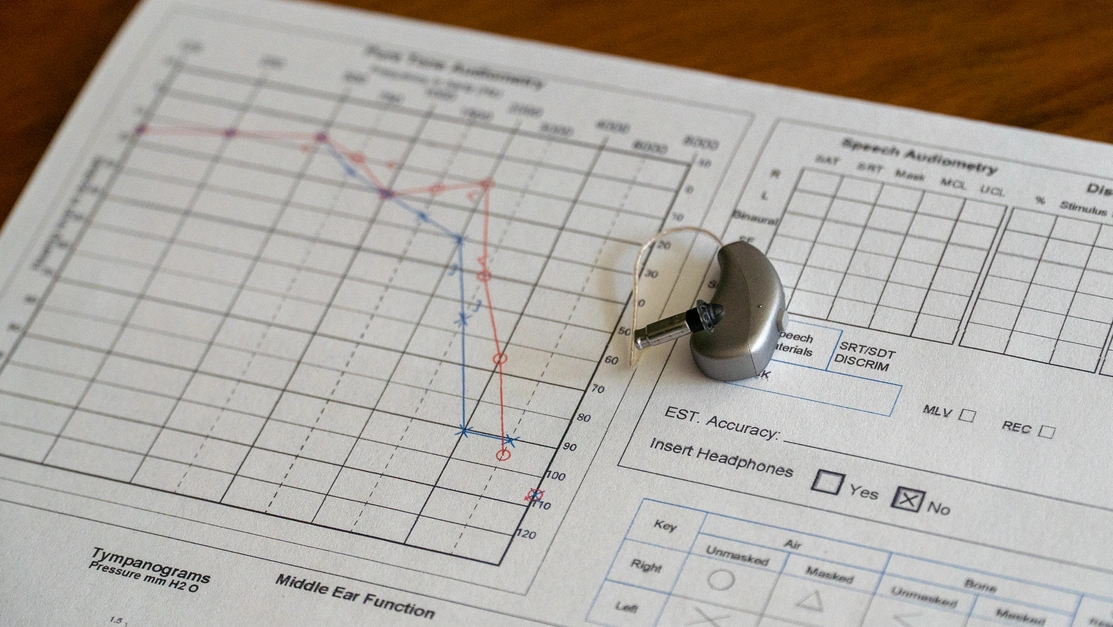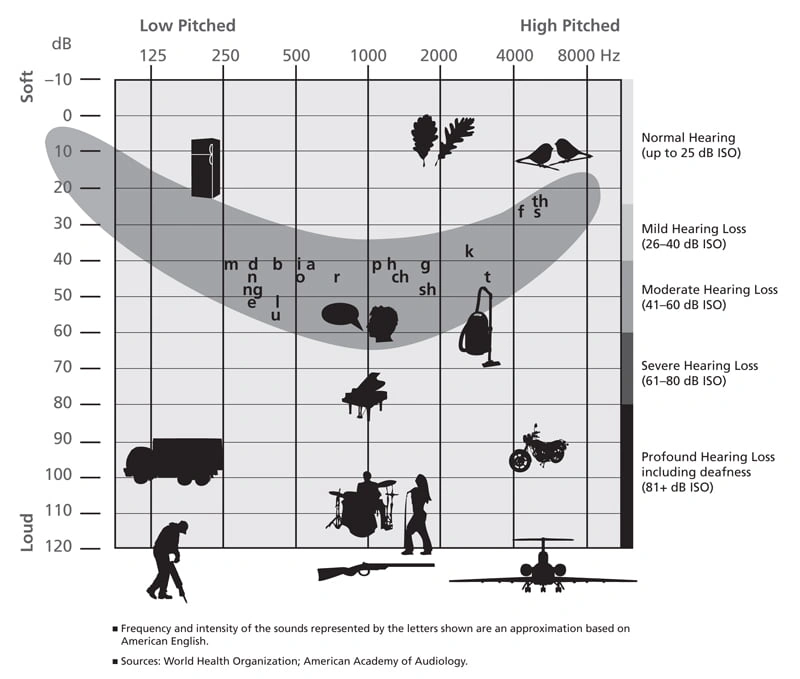What is a hearing test?
A hearing test provides a measurement of the sensitivity of a person’s hearing across the full range of speech.

Hearing tests are usually carried out in a quiet environment which is sound damped from external noise. The person whose hearing is being tested, listens to sounds transmitted by an audiologist and presses a button to signal when they have heard something. The results of the test are plotted on an audiogram.
Volume or loudness which is measured in decibels (dB). Sounds become louder from the top down – softest near the top of the graph.
Pitch or frequency which is measured in hertz (Hz). Frequency goes from low (125Hz) on the left to high (8000Hz) on the right – like a piano (low notes on the left, higher to the right).
In the audiology clinic, testing is done with headphones; we call them ‘air conduction thresholds’ as the sound must travel through the air of the ear canal to be heard. This process allows the audiologist to test the full hearing system.
Additionally, hearing can be tested using a bone conductor – a device that rests on the bone behind the ear (held in place by a metal band stretching over the top of the head). This bone conductor transmits sound vibrations through the bones of the skull directly to the inner ear. This process allows the audiologist to test the hearing of the inner ear directly.
The audiologist would compare the air conduction and bone conduction results to determine where any hearing loss occurs.
The threshold of hearing at any tone/frequency is the quietest sound heard – this is what is recorded on the audiogram for each ear air conduction and bone conduction.
A useful way to look at the audiogram chart is with a ‘speech banana’ superimposed on it. The speech banana is so called because of its shape. It represents the level/intensity and tone/frequency of sounds of speech in language, which when placed on the audiogram, forms a banana like shape.
The chart below shows a speech banana superimposed on an audiogram chart with the different letters of speech and where other common noise occurs.
Thanks to Phonak

Most audiologists will now also perform a ‘speech test’ to see how well you hear speech. This will normally involve getting you to listen to speech (either single words or very short sentences) through headphones or a loudspeaker and asking you to repeat exactly what you have heard. This test gives the audiologist information as to what can be achieved with amplification and what level of improvement could be made to your hearing.
There are several ways you can check your own hearing from the comfort of your own home. Whilst these screening tests are useful, they should not be taken as a diagnostic test of your hearing and if in any doubt to discuss the results with your GP / audiologist.
Online screening hearing tests are available from most hearing aid manufacturers and major suppliers or dispensers.
If you’re worried about your hearing, it's easy to get it checked. Here’s the NHS Choices website guide to your hearing test options.
If you've just had a diagnosis of hearing loss, there is a lot to take in. You'll have questions about next steps.
You might be ready to explore how hearing aids can make a positive difference to your daily life. Here we explain the different types and answer common questions.